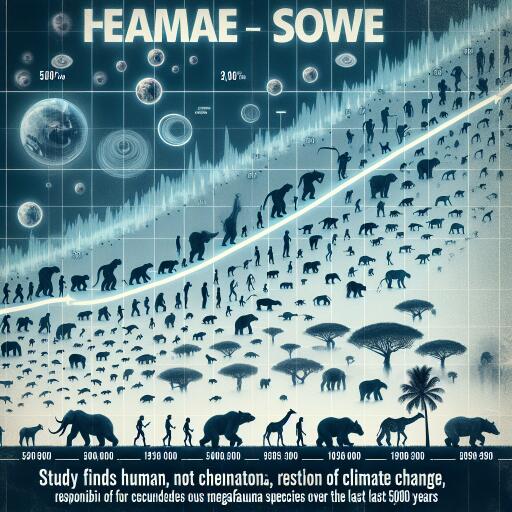
Deciphering the Fall of Giants: Unraveling the Extinction of Megafauna
The debate surrounding the demise of the Earth’s ancient megafauna, giant creatures that once roamed our planet, has been a longstanding mystery within the scientific community. These majestic beings, weighing over 45 kilograms and dominating their respective habitats, have mostly vanished, leaving us to ponder the cause. Research spanning decades has aimed to uncover whether human expansion or climate shifts were the primary culprits of these massive losses. The consensus is now leaning towards a more surprising, if unsettling, conclusion.
The term ‘megafauna’ encompasses a wide range of large mammals, of which at least 161 species have been confirmed extinct. These creatures include the formidable megaherbivores, such as the mighty mammoths and colossal ground sloths, that once prevailed across varied landscapes. From a staggering count of 57 species fifty thousand years ago, today, we find ourselves left with a mere handful, including elephants, rhinos, and giraffes, many of which are teetering on the brink of extinction themselves.
Recent findings from the Danish National Research Foundation’s Center for Ecological Dynamics in a Novel Biosphere (ECONOVO) at Aarhus University have shed new light on this dark chapter of natural history. Through a comprehensive review encompassing archaeological records, climate data, and the study of ancient dietary habits, researchers have constructed a narrative that positions humans at the center of these extinctions.
Contrary to the belief that shifts in climate were the leading cause of megafauna extinctions, evidence increasingly points to human hunting activities. This insight emerges from archaeological discoveries, including ancient traps and weapons, alongside analyses of human remains that trace back to large-mammal consumption.
One might wonder how humans, with early technologies, could have had such a significant impact. The explanation lies in the vulnerable life histories of these large species: lengthy gestation periods, limited offspring, and slow maturation rates made recovery from overhunting nearly impossible. Coupled with the advanced hunting tactics of early humans, the stage was set for a widespread decline.
The extinction patterns observed tell a tale of variance, with some regions experiencing rapid losses and others a more gradual decline. However, the thread connecting these patterns is the presence of humans, either through arrival in new territories or cultural advancements, leading to increased pressure on megafauna populations.
It’s crucial to recognize the vast ecological void left by these extinctions. Large animals were not merely occupants of their ecosystems but engineers of the environment. They played pivotal roles in shaping vegetation, dispersing seeds, and cycling nutrients. Their absence has undoubtedly led to fundamental changes in ecological dynamics, some of which we are only beginning to understand.
In light of these findings, the importance of conservation and the potential benefits of reintroducing large mammals to their ancient habitats cannot be overstated. Such efforts could rekindle dormant ecological processes, fostering biodiversity and restoring balance to modern ecosystems that evolved with the presence of these giants.
As we continue to unravel the mysteries of our planet’s past, it becomes increasingly clear that the story of megafauna is not just a cautionary tale of extinction but a call to action for the preservation and restoration of our world’s natural wonders.





Leave a Reply